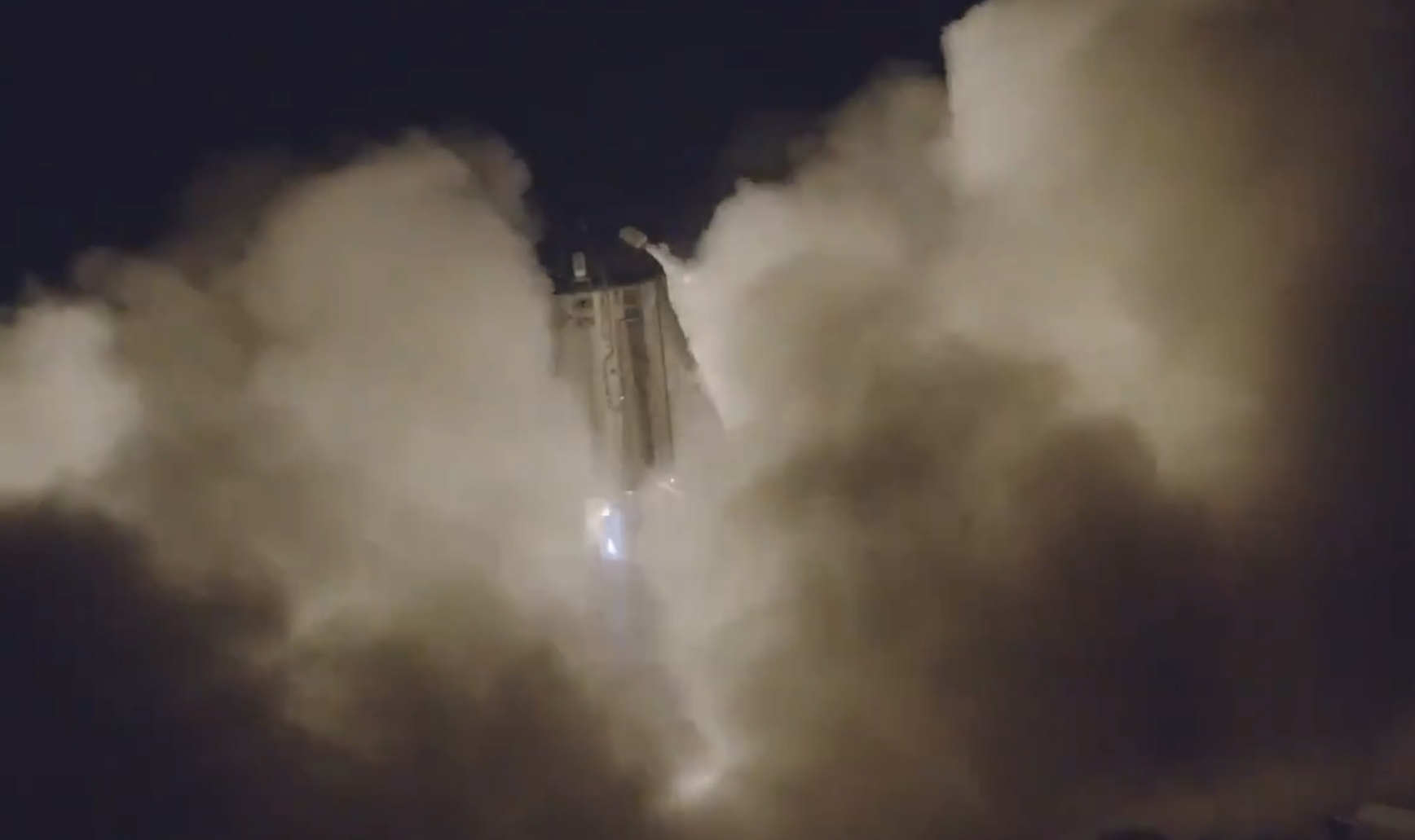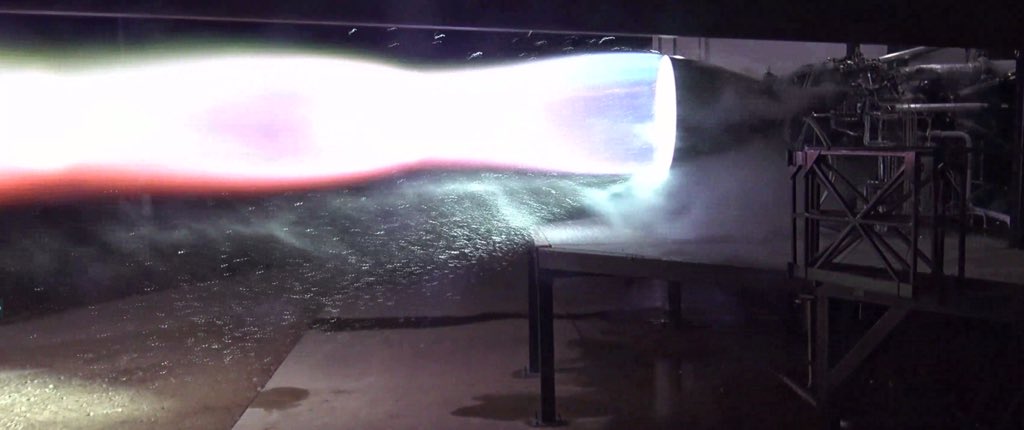Score one for SpaceX! Last night (Thursday, July 25th), after multiple delays that were causing no shortage of stress and concern, Elon Musk’s aerospace company succeeded in conducting their first untethered test with the Starhopper. This test once again validated the engine that will power the full-scale and fully-reusable Starship and its Super Heavy launch system that will fulfill Musk’s promise of sending people to the Moon and to Mars.
Continue reading “Big News! SpaceX’s Starhopper Test Vehicle Completes First Free Flight!”The Starhops Have Begun!
According to Elon Musk, SpaceX’s Starship Hopper just completed its inaugural hop test at the company’s South Texas Launch Site. As the first of many, this test is intended to validate the sophisticated Raptor engines that will be used aboard the full-scale Starship spacecraft, which is intrinsic to Musks’ long-term vision of providing intercontinental flights and making commercial trips to the Moon and Mars.
Continue reading “The Starhops Have Begun!”New SpaceX Raptor Engine Beats the Chamber Pressure of Russia’s RD-180 Engine, According to Elon Musk
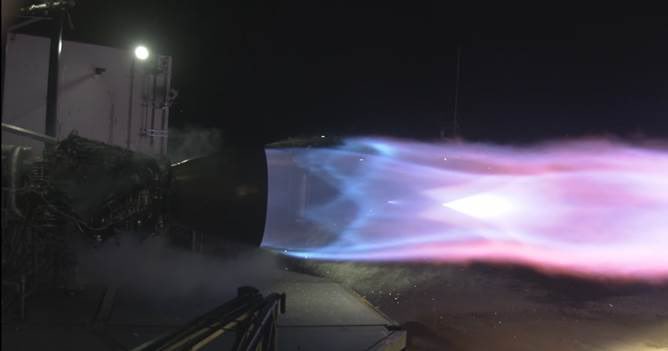
2019 has been shaping up to be an interesting year for SpaceX and its founder, Elon Musk. After completing work on the miniaturized version of the Starship (Starship Alpha or “Starship hopper”) over the holidays, SpaceX moved ahead with the test-firing of its new Raptor engine in late January/early February. In accordance with Musk’s vision, these engines will give the Starship the necessary thrust to reach the Moon and Mars.
The test-firing took place at SpaceX’s Rocket Development and Test Facility, located just outside of McGregor, Texas. As Musk recently tweeted, the tests went very well, achieving the thrust necessary for both the Starship and its first-stage booster, the Super-Heavy. Musk also claimed that the engine broke the previous record for combustion chamber pressure, which was established by the Russian RD-180.
Continue reading “New SpaceX Raptor Engine Beats the Chamber Pressure of Russia’s RD-180 Engine, According to Elon Musk”Elon Musk’s New Plan is to Get to the Moon as Fast as Possible
For Elon Musk and SpaceX, the company he founded to reignite space exploration, a great deal hinges on the creation of the Starship. This super-heavy launch vehicle, which was has evolved considerably in the past few years, will eventually replace the Falcon 9 and Falcon Heavy as the mainstay of the SpaceX fleet. Once operational, it will also facilitate missions to the Moon and eventually Mars.
Once again, Elon Musk has used his social media platform of choice to share the latest details about the Starship‘s progress. As he shared in a series of tweets, which began on Thursday, Jan. 31st, the company has commenced test-firing the Raptor engine at their Rocket Development and Test Facility in McGregor, Texas, and is pushing towards the Starship’s first mission.
Read morePrototype Version of the SpaceX Starship with a Stainless Steel Skin is Under Construction
Elon Musk has been a busy man in recent years. In September of 2016, he unveiled his company’s plan for a super-heavy launch vehicle – the Interplanetary Transport System (ITS). The following year, Musk presented the world with an updated design of the vehicle, which had been renamed the Big Falcon Rocket (BFR) and the Big Falcon Spacecraft (BFS). This past November, the launch system was renamed yet again to the Starship.
Musk also recently indicated that his company would be building a smaller version of the Starship to test the design. As the mission architecture has evolved, Musk has kept the public apprised of the progress of the ship’s construction. As usual, the latest update was provided via Twitter, where Musk shared images of the pieces of the mini-Starship ( aka. Starship Alpha) being rolled out in preparation for construction.
Elon Musk and the SpaceX Odyssey: the Path from Falcon 9 to Mars Colonization Transporter
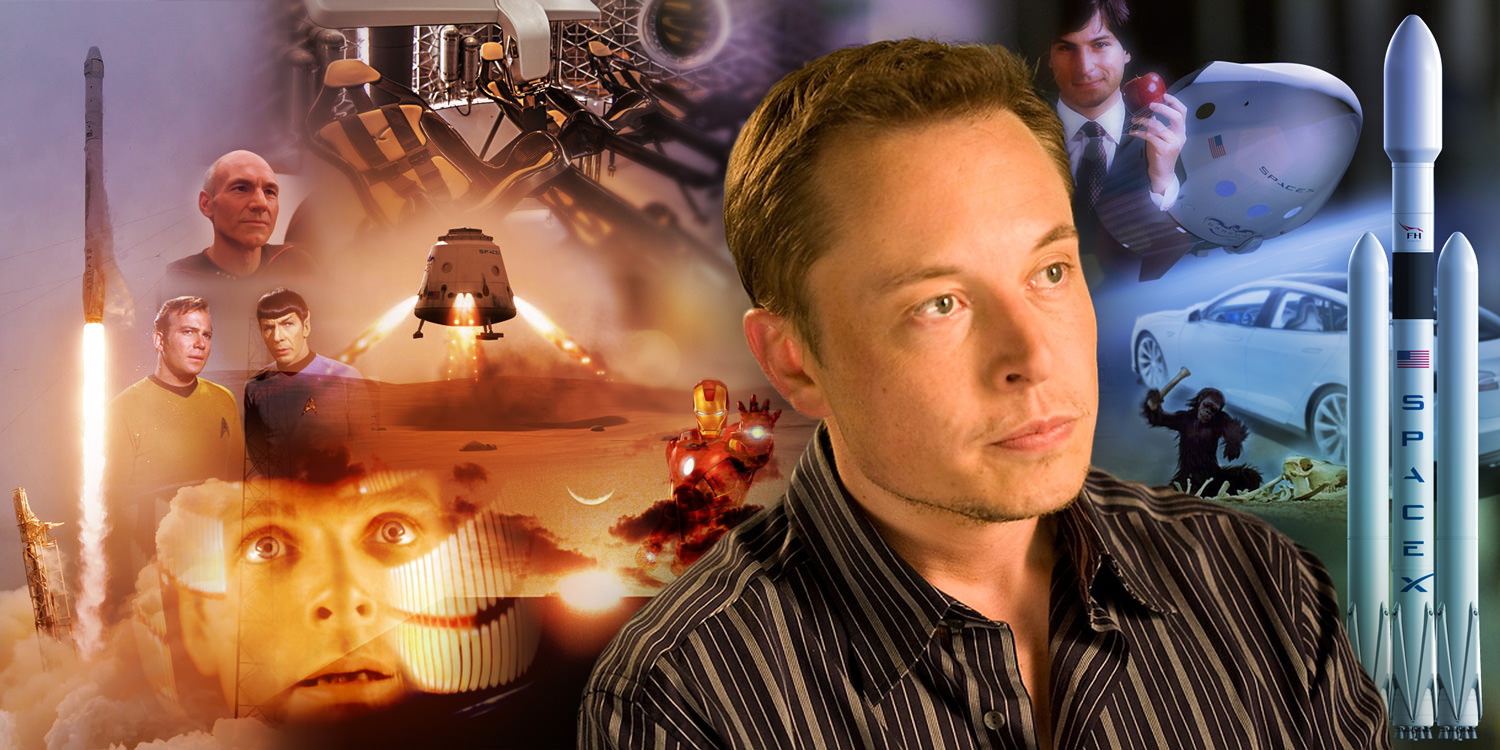
In Kubrick’s and Clark’s 2001 Space Odyssey, there was no question of “Boots or Bots”[ref]. The monolith had been left for humanity as a mileage and direction marker on Route 66 to the stars. So we went to Jupiter and Dave Bowman overcame a sentient machine, shut it down cold and went forth to discover the greatest story yet to be told.
Now Elon Musk, born three years after the great science fiction movie and one year before the last Apollo mission to the Moon has set his goals, is achieving milestones to lift humans beyond low-Earth orbit, beyond the bonds of Earth’s gravity and take us to the first stop in the final frontier – Mars – the destination of the SpaceX odyssey.
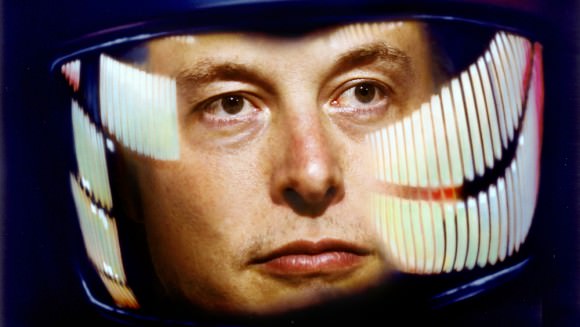
Ask him what’s next and nowhere on his bucket list does he have Disneyland or Disney World. You will find Falcon 9R, Falcon Heavy, Dragon Crew, Raptor Engine and Mars Colonization Transporter (MCT).
At the top of his working list is the continued clean launch record of the Falcon 9 and beside that must-have is the milestone of a soft landing of a Falcon 9 core. To reach this milestone, Elon Musk has an impressive array of successes and also failures – necessary, to-be-expected and effectively of equal value. His plans for tomorrow are keeping us on the edge of our seats.
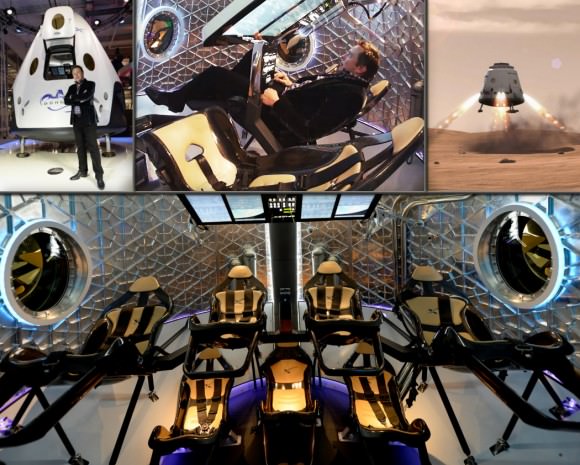
CRS-5, the Cargo Resupply mission number 5, was an unadulterated success and to make it even better, Elon’s crew took another step towards the first soft landing of a Falcon core, even though it wasn’t entirely successful. Elon explained that they ran out of hydaulic fluid. Additionally, there is a slew of telemetry that his engineers are analyzing to optimize the control software. Could it have been just a shortage of fluid? Yes, it’s possible they could extrapolate the performance that was cut short and recognize the landing Musk and crew dreamed of.
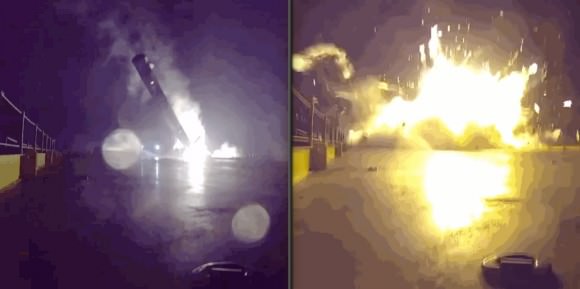
The addition of the new grid fins to improve control both assured the observed level of success and also assured failure. Anytime one adds something unproven to a test vehicle, the risk of failure is raised. This was a fantastic failure that provided a treasure trove of new telemetry and the possibilities to optimize software. More hydraulic fluid is a must but improvements to SpaceX software is what will bring a repeatable string of Falcon core soft landings.
“Failure is not an option,” are the famous words spoken by Eugene Kranz as he’s depicted in the movie Apollo 13. Failure to Elon Musk and to all of us is an essential part of living. However, from Newton to Einstein to Hawking, the equations to describe and define how the Universe functions cannot show failure otherwise they are imperfect and must be replaced. Every moment of a human life is an intertwined array of success and failure. Referring only to the final frontier, in the worse cases, teams fall out of balance and ships fall out of the sky. Just one individual can make a difference between his or a team’s success. Failure, trial and error is a part of Elon’s and SpaceX’s success.
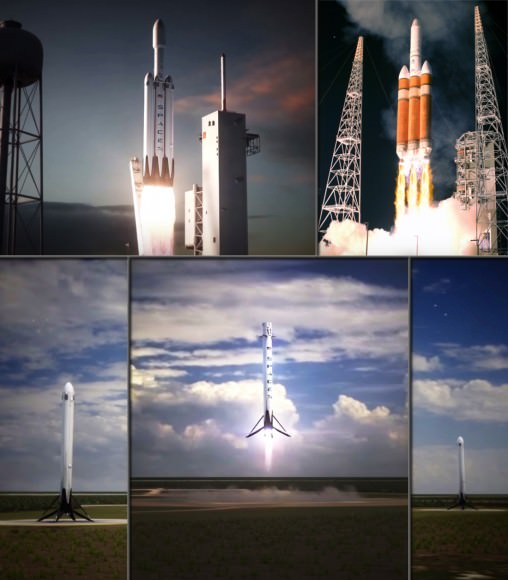
He doesn’t quote or refer to Steve Jobs but Elon Musk is his American successor. From Hyperloops, to the next generation of Tesla electric vehicles, Musk is wasting no time unloading ideas and making his dreams reality. Achieving his goals, making milestones depends also on bottom line – price and performance into profits. The Falcon rockets are under-cutting ULA EELVs (Atlas & Delta) by more than half in price per pound of payload and even more with future reuse. With Falcon Heavy he will also stake claim to the most powerful American-made rocket.

Musk’s success will depend on demand for his product. News in the last week of his investments in worldwide space-based internet service also shows his intent to promote products that will utilize his low-cost launch solutions. The next generation of space industry could falter without investors and from the likes of Musk, re-investing to build demand for launch and sustaining young companies through their start-up phases. Build it and they will come but take for granted, not recognize the fragility of the industry, is at your own peril.
So what is next in the SpaceX Odyssey? Elon’s sights remain firmly on the Falcon 9R (Reuse) and the Falcon Heavy. Nothing revolutionary on first appearance, the Falcon Heavy will look like a Delta IV Heavy on steroids. Price and performance will determine its success – there is no comparison. It is unclear what will become of the Delta IV Heavy once the Falcon Heavy is ready for service. There may be configurations of the Delta IV with an upper stage that SpaceX cannot match for a time but either way, the US government is likely to effectively provide welfare for the Delta and even Atlas vehicles until ULA (Lockheed Martin and Boeing’s developed corporation) can develop a competitive solution. The only advantage remaining for ULA is that Falcon Heavy hasn’t launched yet. Falcon Heavy, based on Falcon 9, does carry a likelihood of success based on Falcon 9’s 13 of 13 successful launches over the last 5 years. Delta IV Heavy has had 7 of 8 successful launches over a span of 11 years.
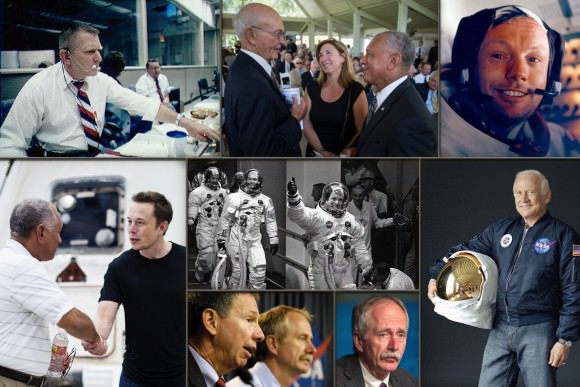
The convergence of space science and technology and science fiction in the form of Musk’s visions for SpaceX is linked to the NASA legacy beginning with NASA in 1958, accelerated by JFK in 1962 and landing upon the Moon in 1969. The legacy spans backward in time to Konstantin Tsiolkovsky, Robert Goddard, Werner Von Braun and countless engineers and forward through the Space Shuttle and Space Station era.

The legacy of Shuttle is that NASA remained Earth-bound for 30-plus years during a time that Elon Musk grew up in South Africa and Canada and finally brought his visions to the United States. With a more daring path by NASA, the story to tell today would have been Moon bases or Mars missions completed in the 1990s and commercial space development that might have outpaced or pale in comparison to today’s. Whether Musk would be present in commercial space under this alternate reality is very uncertain. But Shuttle retirement, under-funding its successor, the Ares I & V and Orion, cancelling the whole Constellation program, then creating Commercial Crew program, led to SpaceX winning a contract and accelerated development of Falcon 9 and the Dragon capsule.
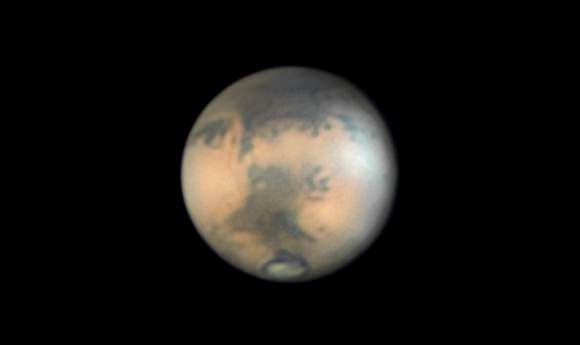
SpaceX is not meant to just make widgets and profit. Mars is the objective and whether by SpaceX or otherwise, it is the first stop in humankind’s journey into the final frontier. Mars is why Musk developed SpaceX. To that end, the first focal point for SpaceX has been the development of the Merlin engine.
Now, SpaceX’s plans for Mars are focusing on a new engine – Raptor and not a Merlin 2 – which will operate on liquified methane and liquid oxygen. The advantage of methane is its cleaner combustion leaving less exhaust deposits within the reusable engines. Furthermore, the Raptor will spearhead development of an engine that will land on Mar and be refueled with Methane produced from Martian natural resources.
The Raptor remains a few years off and the design is changing. A test stand has been developed for testing Raptor engine components at NASA’s Stennis Space Center. In a January Reddit chat session[ref] with enthusiasts, Elon replied that rather than being a Saturn F-1 class engine, that is, thrust of about 1.5 million lbf (foot-lbs force), his engineers are dialing down the size to optimize performance and reliability. Musk stated that plans call for Raptor engines to produce 500,000 lbf (2.2 million newtons) of thrust. While smaller, this represents a future engine that is 3 times as powerful as the present Merlin engine (700k newtons/157 klbf). It is 1/3rd the power of an F-1. Musk and company will continue to cluster engines to make big rockets.
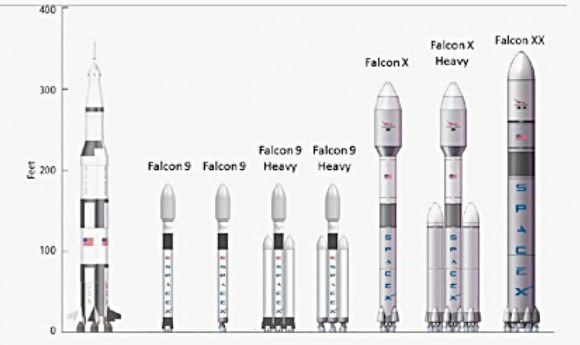
To achieve their ultimate goal – Mars colonization, SpaceX will require a big rocket. Elon Musk has repeatedly stated that a delivery of 100 colonists per trip is the present vision. The vision calls for the Mars Colonization Transporter (MCT). This spaceship has no publicly shared SpaceX concept illustrations as yet but more information is planned soon. A few enthusiasts on the web have shared their visions of MCT. What we can imagine is that MCT will become a interplanetary ferry.
The large vehicle is likely to be constructed in low-Earth orbit and remain in space, ferrying colonists between Earth orbit and Mars orbit. Raptor methane/LOX engines will drive it to Mars and back. Possibly, aerobraking will be employed at both ends to reduce costs. Raptor engines will be used to lift a score of passengers at a time and fill the living quarters of the waiting MCT vehicle. Once orbiting Mars, how does one deliver 100 colonists to the surface? With atmospheric pressure at its surface equivalent to Earth’s at 100,000 feet, Mars does not provide an Earth-like aerodynamics to land a large vehicle.
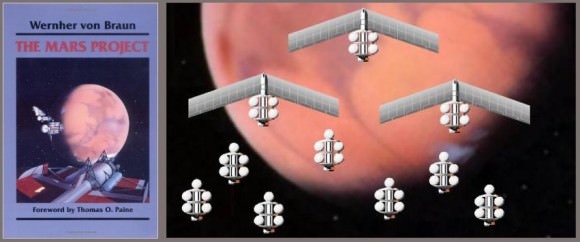
In 1952, Werner Von Braun in his book “Mars Projekt” envisioned an armada of ships, each depending on launch vehicles much larger than the Saturn V he designed a decade later. Like the invading Martians of War of the Worlds, the armada would rather converge on Mars and deploy dozens of winged landing vehicles that would use selected flat Martian plain to skid with passengers to a safe landing. For now, Elon and SpaceX illustrate the landing of Dragon capsules on Mars but it will clearly require a much larger lander. Perhaps, it will use future Raptors to land softly or possibly employ winged landers such as Von Braun’s after robotic Earth-movers on Mars have constructed ten or twenty mile long runways.
We wait and see what is next for Elon Musk’s SpaceX vision, his SpaceX Odyssey. For Elon Musk and his crew, there are no “wives” – Penelope and families awaiting their arrival on Mars. Their mission is more than a five year journey such as Star Trek. The trip to Mars will take the common 7 months of a Hohmann transfer orbit but the mission is really measured in decades. In the short-term, Falcon 9 is poised to launch again in early February and will again attempt a soft landing on a barge at sea. And later, hopefully, in 2015, the Falcon Heavy will make its maiden flight from Cape Canaveral’s rebuilt launch pad 39A where the Saturn V lifted Apollo 11 to the Moon and the first, last and many Space Shuttles were launched.
References:
National Aeronatics and Space Administration
Happy Birthday to my sister Sylvia who brought home posters, literature and interest from North American-Rockwell in Downey during the Apollo era and sparked my interest.

